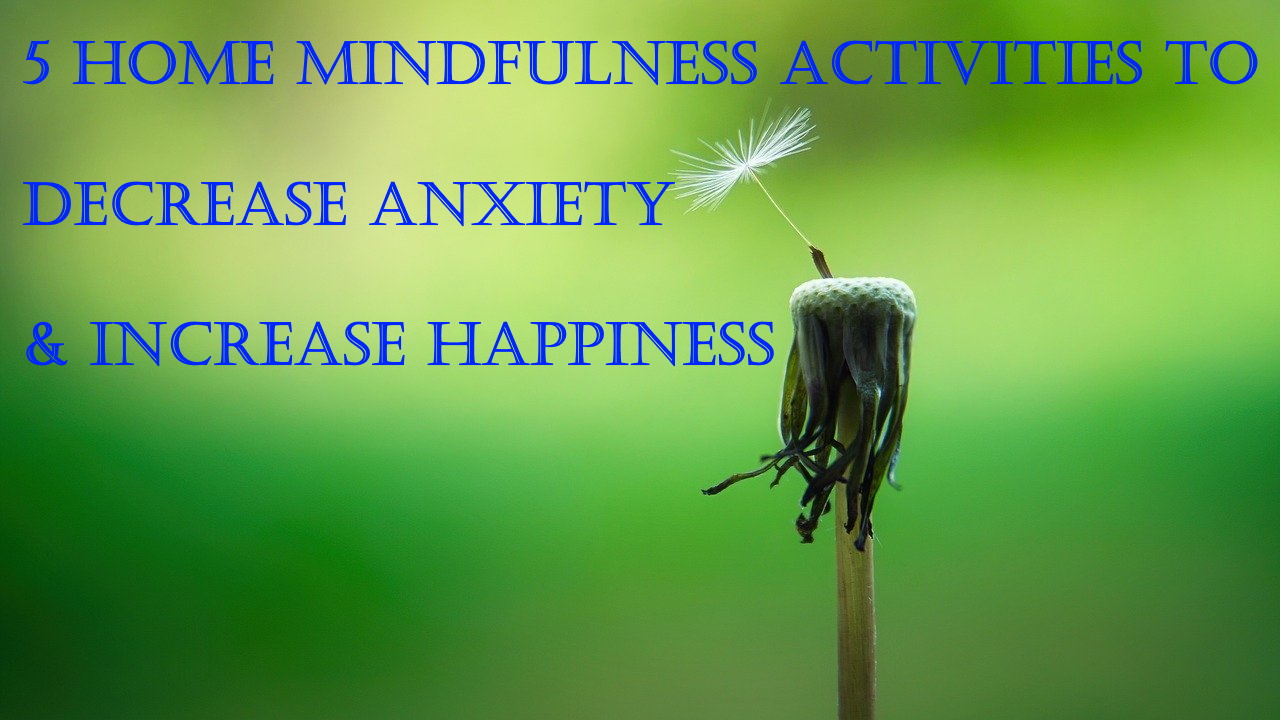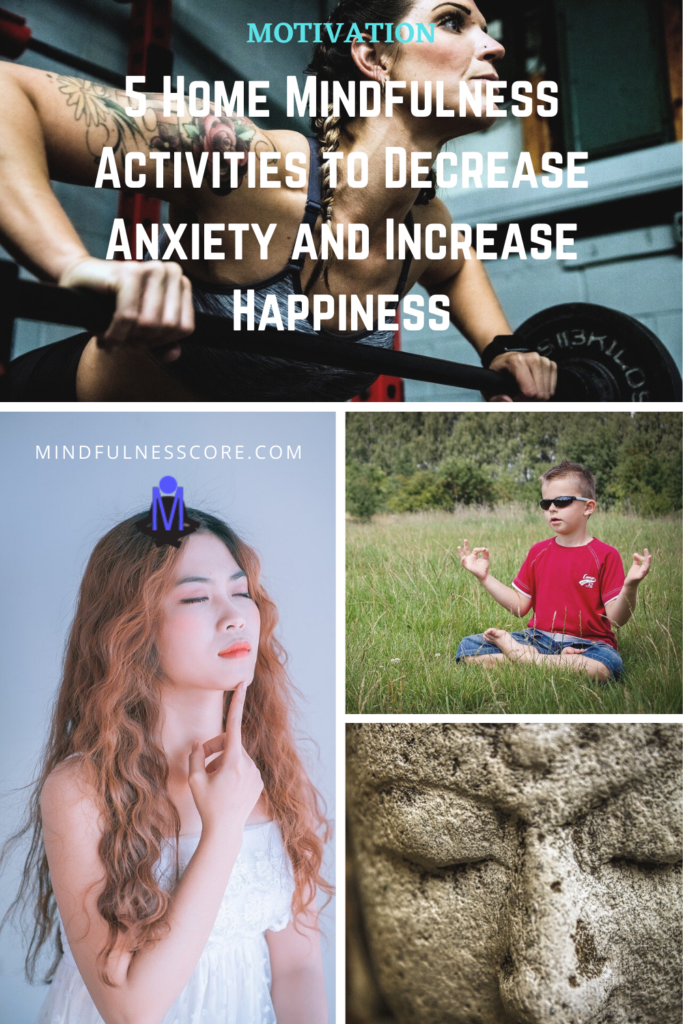5 Home Mindfulness Activities to Decrease Anxiety and Increase Happiness
Mindfulness is becoming an increasingly popular philosophy: those who practice it aim to enjoy the present moment in a non-judgmental way to achieve self-awareness. Several mindfulness techniques can be used to not only improve your mood but also to decrease any feelings of anxiety and sadness, promoting mental and physical health.
Here is a list of five Mindfulness activities you can implement in your daily routine, practising them from the comfort of your home:
1- Learn the Body Scan Meditation
Body scanning is a powerful meditation technique able to quiet the mind and allow the body to detach from negative thoughts which bring us pain. To perform this meditation, start by focusing your attention on each part of your body, methodically starting from your toes, until you reach the top of your head. Try to do this very slowly, focusing your attention on each part of your body. Notice which parts seem to hold more tension, and which relax more easily. Keep very still, and observe how you gradually become more conscious of your body and its awareness. You might notice that as soon as you try to focus on stillness, unpleasant physical signs such as itchiness, pain and general restlessness will surface: this is totally normal. Gently breathe in and out, allowing your mind to become quiet again.
What makes body scanning so powerful is the fact that it teaches us to perceive our bodies with precision and love, and it also allows us to give a name to what we feel. Secondly, Body Scanning interrupts the constant stream of consciousness and chaos of our minds, allowing us to bring our focus back to the present moment. The incessant dialogue of the mind subsides, in favour of a careful listening of our bodies’ rhythms.
Moreover, focusing our attention of the concept of stillness and immobility teaches us how to embrace the act of “not doing” something, turning off that inner engine keeping us active at all times. Ruminating and anxious minds can benefit immensely from stillness, as by doing so it is possible to understand that it is OK to be still and value the simple beauty of the present moment.
2- Make a Happiness Jar
If your anxiety makes you feel unmotivated and uninspired, a happiness jar might be just what you need in order to feel brighter, more positive and optimistic!
Simply choose a jar of your liking and fill it to the brim with positive thoughts, encouraging words, motivational quotes or any sentence you think it uplifting and joyful. A few positive sentences could be: ” everything will be OK “, ” You’ve got this “, ” I believe in you “, ” You can accomplish way more than you think!”, ” I appreciate you ” and ” Take it easy and give yourself plenty of time to deal with this, everything will be alright “.
You might be surprised to know that this little happiness exercise can not only improve and stabilize your mood but also improve your general health: a 2016 study from the Harvard T.H. Chan School of Public Health confirmed the beneficial effects of positive thinking on the mind and the body. Over an eight years span, the study found that positive-minded individuals had significantly reduced risks of developing serious pathologies such as heart disease, stroke or cancer. The study concluded that adopting a positive mindset not only promoted healthier behaviours, but it also increased resilience, making the individual better prepared to deal with harsh situations as well as the challenges of daily life.
Just like a plant needs sunlight and water to survive and grow, your mind needs nourishment to thrive. Treat yourself!
3- Colouring Books
Colouring books have become increasingly popular and widespread. It is possible to find them in every bookstore, with multiple designs and styles suited for all tastes. Making some time to colour drawings is a wonderful mindfulness activity, one you can enjoy virtually anywhere. These books aim to bring comfort and peace to adults and children of all ages. How effective are they, though? Science tells us that they might be very effective, indeed.
Researchers at the University of Otago analyzed how colouring books affect individuals, finding that those who coloured books regularly experienced an improvement in mood, stress-resistance and general mental health. The “Art of Colouring” might be therapeutic, but of course, it is not a substitute for therapy. Nevertheless, regularly making time for this activity can definitely help individuals struggling with anxiety, bringing along a sense of calm and happiness. It is not even necessary to purchase a book, as the web is full of freebies you can comfortably print at home and colour at any time. Try to use colours that spark joy in your life, for example, pastel tones or vivid yellow, orange and blue shades.
You can start by colouring books once or twice a week, choosing a designated time to fully focus on the practice. Do not be overly concerned with the outcome, as no one but you will see the final result! Therefore, allow yourself to try something different, pay attention to the way each colour combines with another, discover combinations which you find particularly pleasing and do not worry if the first attempts do not turn out the way you want them to. The point is to enjoy the journey and to allow yourself to relax in the process.
Don’t be afraid to experiment with patterns and techniques, let your imagination go wild! Your inner child will thank you!
4- Listen to ASMR
ASMR stands for Autonomous Sensory Meridian Response, and it describes the pleasant tingly feeling many people experience when they listen to a very soothing, soft-spoken voice or particular sounds like a pencil on paper or the sound of rain. Nowadays, ASMR videos are incredibly popular on platforms like Youtube and BiliBili. You can get a virtual haircut or visit a virtual salon with a click. ASMR videos use the latest sound technologies, featuring special binaural microphone capable of mimicking human hearing; this means that, if you are listening to the video using headphones, sounds will travel rapidly from one ear to the other, giving you the impression that someone is really moving around you. The result is a very immersive and delightfully relaxing experience.
Many individuals feel physical tingles when listening to ASMR, while others simply feel relaxed. However, not everyone finds ASMR pleasant at first, so it might get some time to get acquainted with this world and most importantly, to find the right sounds and voices.
ASMR is a great mindfulness exercise, as the videos are created specifically around specific sounds and relaxation “triggers”, providing a fantastic opportunity to focus on the present moment and to find the magic behind the most simple sounds.
Video creators who specialize in ASMR videos are also known as “ASMRtists”, and you can find thousands of creators for any language you might want to listen to. If you are new to this world, start by watching Gentle Whispering ASMR (Maria) and WhispersRed ASMR (Emma) to get an idea of what ASMR is and to discover the type of triggers which are more effective for you.
5- Clean and Declutter Your Space
Decluttering your living space is a simple and effective activity to promote happiness and decrease anxiety. According to a study by UCLA’s Center for Everyday Life and Families, there is a link between higher levels of cortisol, also known as the stress hormone, and clutter in the living space. This explains why, for example, we tend to feel better in a clean and tidy environment, while we feel anxious and claustrophobic when we are in a messy room full of objects. Cluttered spaces are more difficult to clean, so often times we postpone the real work until the weight of it starts affecting us mentally and physically.
Clutter has also been linked to depression, lack of concentration and weight gain. It is definitely easier to eat well, focus and feel brighter in a tidy space, so transform these chores into a mindfulness exercise by devoting half an hour of your time per day to get rid of unwanted objects, broken items or unnecessary visual clutter. Books and magazines can be donated to second-hand bookstores and local libraries, while clothes and blankets can be given away to charity stores or placed in special containers.
Once your space is free of clutter, take your time to properly scrub the surfaces and as you do this, imagine that you are getting rid of everything that has been weighing you down until now: visualize any fear or sense of inadequacy melting down, like dust on a surface, and getting swiped away from you, until you are left lighter and cleaner.
You might be surprised by how amazing you will feel once you give your space a makeover!
I hope you enjoyed these simple and effective Mindfulness exercises to decrease anxiety and promote happiness. You can implement them in your weekly routine and experience their immense benefits right away! If you like this article, share it with a friend or loved one who might benefit from it.


